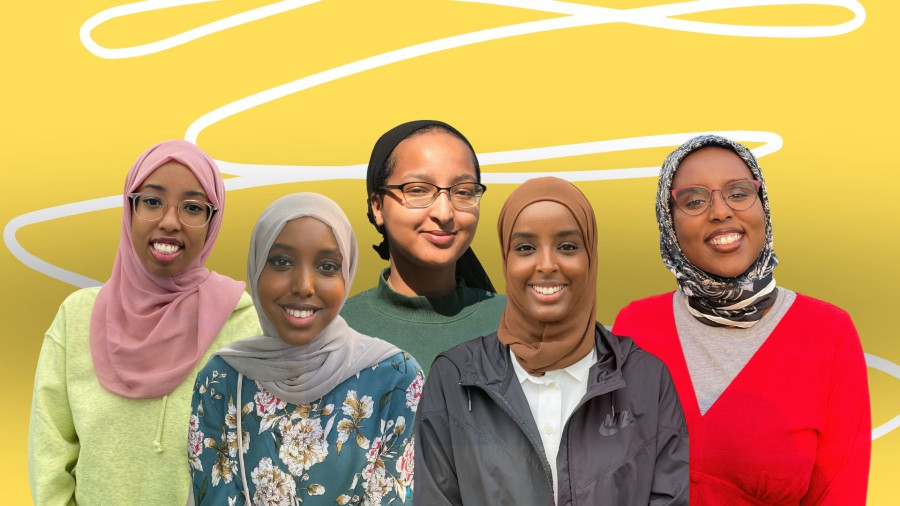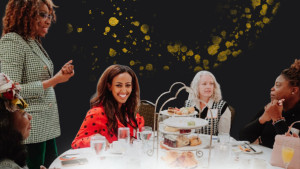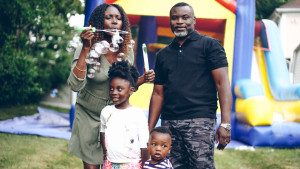To be a Black, Muslim woman in Canada is to choose constantly which part of your identity you want to take center stage to fulfil societal narratives.
It feels like you can be Black or Muslim; but you cannot take space as both Black and Muslim. This narrative is something the hosts of the Abwaan Chronicles are deeply familiar with.
The Abwaan Chronicles Podcast was created five years ago by five friends who grew up together. The first episode discussed their experience as Third Culture Kids; Black Muslim women, mostly first-generation Canadians who grew up in the middle east. A dizzying mixture in a complex upbringing they hoped people could relate to.
The expansion from podcast to live art exhibit was rooted in the idea of questioning the Black Muslim Female narrative. The Black Muslim community deserves to carve out a space for itself in the art world, to be recognized for their talent and contribution without erasing a central part of their identity.
Three podcast episodes were brought to life through immersive art installations at the Gardiner Museum in Toronto in July. “Love Anthology”, “Climate Change”, and “Plant Parenthood”. The exhibit was curated to showcase the talent of Black Muslims in Toronto and across Canada, while also celebrating the 5th anniversary of the podcast's inception.
The love anthology installation had romance books piled on the floor and as a platform for the mannequin wearing a Victorian-esque dress. The installation also had an interactive activity where guests were encouraged to write about love and what they thought it meant.
Abwaan; a word that is Somali in origin, encompasses what it means to be a storyteller, a person whose words you can relate to in a fundamental manner.
“The Plant Parenthood' episode sought to relate to the loneliness people felt during the pandemic and how much nurture they put into being good plant parents. With a jungle-esque feel, the installation had rows of caged live plants on grids, photos of listeners from around the world with their plants and information cards of common houseplants. Being able to incorporate the podcast’s global audience was important, as the episode itself featured Houseplant Journal (Darryl Cheng) from Toronto, fiddleleaf fig mom (Khadija) from Edmonton, Alberta and Maymuun, a supporter, listener, and friend of the podcast from all the way in Birmingham, UK.
The climate change installation was a stark contrast to the other two installations, it was placed on the furthest corner of the museum hall and was covered by black curtains on four pillars that created an isolated room of darkness. This was an intentional setup as projectors played a looped video about the devastation caused by climate change and its progression throughout different timelines in history.
{https://www.instagram.com/p/CgW4alRrBj5/?utm_source=ig_web_copy_link}
Artworks by Black Muslim artists were also shown at the exhibit, two photographers, a visual artist, a digital artist, and an oil painter. Many of them are emerging artists who often use their art as a vehicle of change; representing their identities as Black Muslim women.
Abwaan Chronicles tells stories of what it feels like to live in a society that is unwelcoming to people who have three intertwined and marginalized intersections in their identities. This event was meant to bring hope to a very large subset of the Muslim population, the Black Muslim creatives who have yet to be acknowledged for their contributions to the art world.

 By
By 





